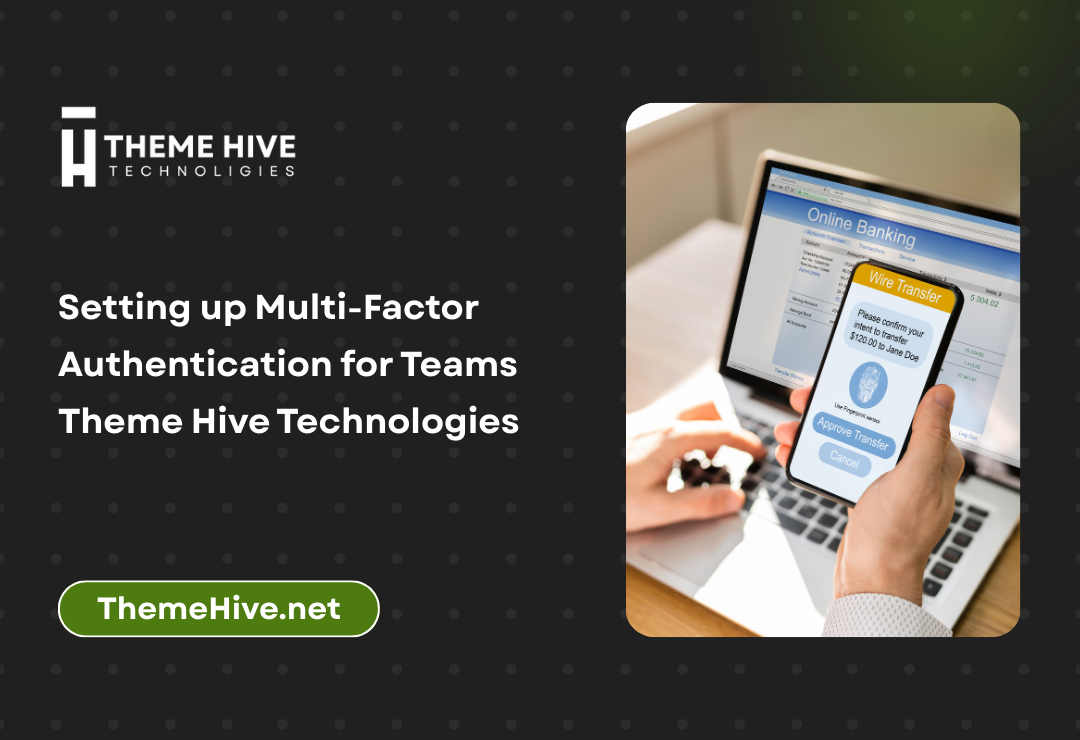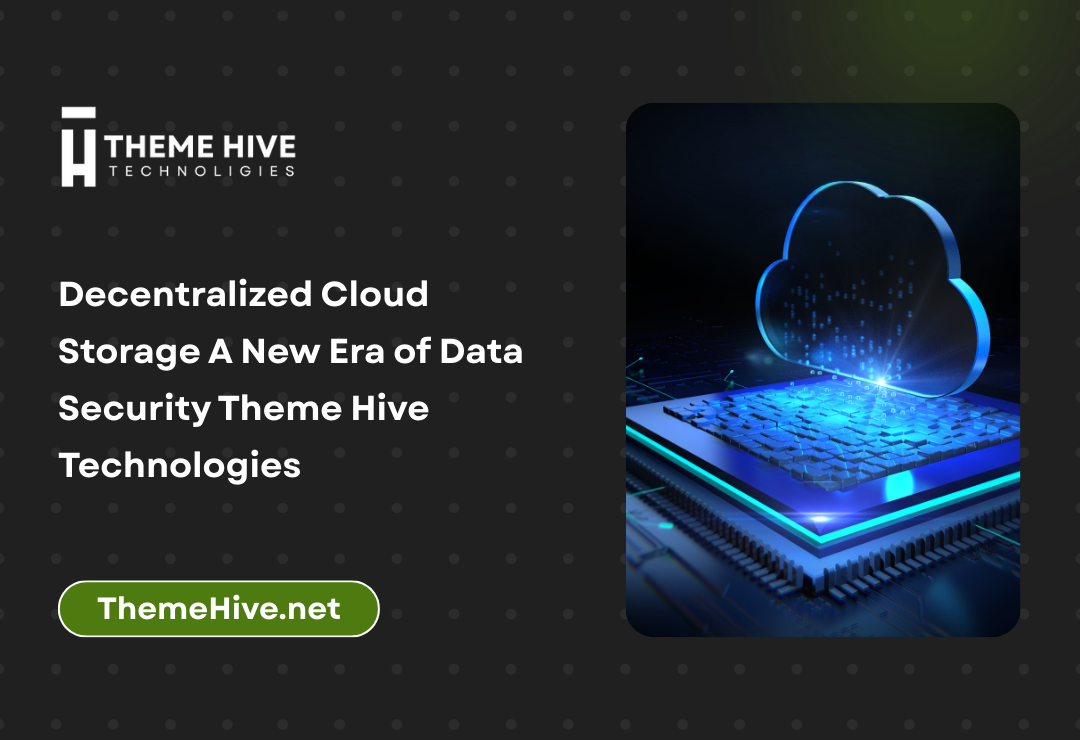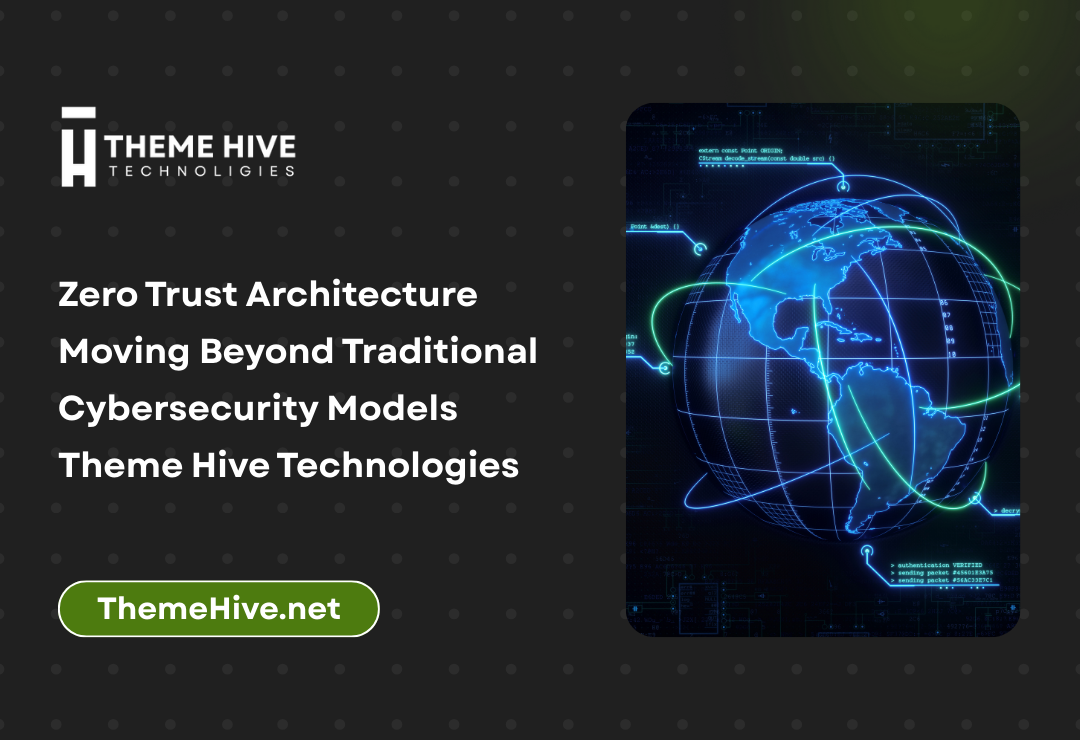Multi-factor authentication (MFA) has become a cornerstone of modern cybersecurity, with organizations that implement MFA seeing a 99.9% reduction in account compromise according to Microsoft Security Intelligence. Setting up multi-factor authentication for teams is no longer optional—it’s essential for protecting business data and maintaining operational security in today’s threat landscape. ThemeHive Technologies specializes in helping organizations implement robust MFA solutions that balance security with user experience.
Understanding Multi-Factor Authentication Fundamentals
What is Multi-Factor Authentication?
Multi-factor authentication is a security method that requires users to provide two or more verification factors to gain access to applications, systems, or accounts. These factors fall into three main categories: something you know (passwords), something you have (smartphones or tokens), and something you are (biometric data).
The power of MFA lies in its layered approach to security. Even if one authentication factor is compromised, attackers still cannot access protected resources without the additional factors. This significantly reduces the risk of unauthorized access and data breaches.
The Business Case for Team MFA Implementation
Organizations implementing MFA for their teams see immediate security benefits. Cybersecurity and Infrastructure Security Agency (CISA) reports show that MFA can prevent up to 99% of automated attacks. Beyond security, MFA implementation demonstrates compliance with various regulatory requirements and builds customer trust.
Theme Hive Technologies has observed that businesses with properly configured team MFA experience fewer security incidents, reduced IT support costs, and improved regulatory compliance scores. The initial investment in MFA setup pays dividends through prevented breaches and enhanced operational confidence.
Types of Multi-Factor Authentication Methods
SMS and Voice-Based Authentication
SMS-based MFA sends verification codes to users’ mobile phones via text message, while voice-based systems deliver codes through automated phone calls. These methods are widely supported and easy to implement, making them popular choices for initial MFA deployments.
However, SMS and voice authentication have known vulnerabilities, including SIM swapping attacks and interception risks. While better than single-factor authentication, these methods should be considered baseline protection rather than premium security solutions.
Authenticator Apps and TOTP
Time-based One-Time Password (TOTP) applications like Google Authenticator, Microsoft Authenticator, or Authy generate time-sensitive codes that refresh every 30 seconds. These apps don’t require network connectivity for code generation, making them more secure than SMS-based methods.
TOTP applications are ideal for team environments because they’re cost-effective, widely compatible, and provide strong security. Team administrators can easily distribute QR codes for setup and manage multiple accounts within enterprise authenticator solutions.
Hardware Security Keys
Hardware security keys represent the gold standard of MFA implementation. These physical devices, such as YubiKeys or Google Titan keys, provide phishing-resistant authentication through FIDO2/WebAuthn protocols.
While hardware keys require upfront investment and physical distribution, they offer unparalleled security for high-risk environments. ThemeHive Technologies recommends hardware keys for organizations handling sensitive data or operating in regulated industries.
Biometric Authentication
Biometric factors include fingerprints, facial recognition, voice recognition, and iris scans. Modern devices increasingly support biometric authentication, making it convenient for team members while providing strong security.
Biometric authentication works particularly well in mobile-first environments and can be combined with other MFA methods for enhanced security. However, organizations must consider privacy implications and backup authentication methods when implementing biometric solutions.
Planning Your Team MFA Implementation
Conducting Security Risk Assessment
Before implementing MFA for your team, conduct a comprehensive security assessment to identify critical systems, user access patterns, and potential vulnerabilities. This assessment should evaluate current authentication methods, identify high-risk applications, and prioritize systems for MFA deployment.
Consider factors such as data sensitivity, regulatory requirements, user roles, and business criticality when planning your MFA rollout. ThemeHive Technologies provides detailed security assessments that help organizations design effective MFA strategies tailored to their specific risk profiles.
Choosing the Right MFA Solution
Selecting appropriate MFA methods depends on your organization’s security requirements, budget constraints, user preferences, and technical infrastructure. Consider factors such as user experience, administrative overhead, scalability, and integration capabilities when evaluating MFA solutions.
Enterprise MFA platforms like Microsoft Azure AD, Okta, Ping Identity, or Google Workspace provide comprehensive solutions with centralized management, reporting, and integration capabilities. These platforms support multiple authentication methods and provide the flexibility needed for diverse team environments.
Developing Implementation Timeline
Create a phased implementation timeline that prioritizes critical systems while minimizing user disruption. Start with high-risk applications and administrative accounts before expanding to general user populations. Allow adequate time for user training, technical testing, and support preparation.
A typical MFA rollout might begin with IT administrators and executives, followed by departments handling sensitive data, and finally extending to all team members. This approach allows organizations to refine processes and address issues before full deployment.
Step-by-Step MFA Setup Process
Phase 1: Infrastructure Preparation
Begin by evaluating your current identity management infrastructure and ensuring compatibility with chosen MFA solutions. This may involve updating identity providers, configuring application integrations, and establishing administrative policies.
Document current user access patterns, application dependencies, and authentication flows to identify potential integration challenges. Prepare backup authentication methods and recovery procedures before beginning user enrollment.
Phase 2: Pilot Program Launch
Start with a small group of tech-savvy users to test MFA implementation and identify potential issues. This pilot group should include representatives from different departments and user roles to ensure comprehensive testing.
Gather feedback on user experience, identify technical challenges, and refine support procedures based on pilot program results. Use this phase to validate training materials and support documentation before broader deployment.
Phase 3: Department-by-Department Rollout
Deploy MFA systematically across departments, beginning with those handling the most sensitive data or having the highest security requirements. Provide dedicated support during initial rollout periods and monitor adoption rates closely.
Theme Hive Technologies recommends scheduling department-specific training sessions and providing on-site support during initial deployment phases to ensure smooth transitions and high adoption rates.
Phase 4: Full Organization Implementation
Complete MFA deployment across all team members while maintaining support resources for ongoing issues. Implement monitoring and reporting systems to track authentication success rates, user adoption, and security incidents.
Establish ongoing training programs for new employees and regular refresher training for existing team members. Create clear escalation procedures for MFA-related issues and maintain updated documentation for all supported authentication methods.
Technical Implementation Considerations
Integration with Existing Systems
MFA implementation must seamlessly integrate with existing applications, systems, and workflows to ensure user adoption and maintain productivity. Evaluate application compatibility, API availability, and single sign-on (SSO) requirements when planning integration.
Legacy applications may require additional configuration or third-party solutions to support modern MFA methods. Consider application modernization opportunities alongside MFA implementation to maximize security improvements.
Network and Infrastructure Requirements
Ensure network infrastructure can support increased authentication traffic and maintain reliability during peak usage periods. Consider redundancy requirements, backup authentication methods, and offline access scenarios.
Plan for increased help desk volumes during initial deployment and ensure support staff have appropriate tools and training to assist users with MFA-related issues.
Mobile Device Management
With smartphone-based MFA becoming increasingly common, organizations must consider mobile device management (MDM) policies and procedures. Establish guidelines for supported devices, application installation, and device replacement scenarios.
Consider bring-your-own-device (BYOD) policies and their impact on MFA implementation. Develop procedures for managing MFA on both corporate-owned and personal devices while maintaining security and privacy.
User Training and Change Management
Creating Comprehensive Training Programs
Effective user training is critical for successful MFA adoption. Develop training materials that explain the business rationale for MFA, demonstrate setup procedures, and provide troubleshooting guidance for common issues.
Training should be role-specific, with different content for end users, IT administrators, and management. Include hands-on practice sessions and provide multiple training formats to accommodate different learning preferences.
Managing User Resistance and Concerns
Address common user concerns about MFA including perceived inconvenience, privacy issues, and technical complexity. Emphasize security benefits and provide clear examples of how MFA protects both organizational and personal data.
ThemeHive Technologies has found that transparent communication about security threats and involving users in security planning helps build support for MFA initiatives. Regular communication about security improvements and threat prevention builds ongoing engagement.
Ongoing Support and Reinforcement
Establish comprehensive support procedures for MFA-related issues including device replacement, account recovery, and technical problems. Provide multiple support channels including self-service options, help desk support, and escalation procedures.
Regular communication about MFA benefits, security improvements, and threat prevention helps maintain user engagement and compliance with security policies.
Best Practices for Team MFA Management
Administrative Controls and Policies
Develop comprehensive policies governing MFA usage, including approved authentication methods, device management requirements, and exception procedures. Establish clear roles and responsibilities for MFA administration and support.
Implement monitoring and reporting systems to track MFA adoption, authentication success rates, and security incidents. Regular policy reviews ensure MFA requirements remain aligned with evolving security needs and business requirements.
Backup and Recovery Procedures
Establish robust backup authentication methods and account recovery procedures to prevent user lockouts while maintaining security. Recovery procedures should be well-documented, regularly tested, and accessible to appropriate support personnel.
Consider multiple backup options including backup codes, alternative authentication methods, and administrative override procedures. Balance security requirements with usability to ensure users can access critical systems when needed.
Regular Security Reviews and Updates
Conduct regular reviews of MFA effectiveness, user adoption rates, and emerging threats. Update authentication methods, policies, and procedures based on evolving security landscape and organizational needs.
Stay informed about new MFA technologies, emerging threats, and industry best practices. ThemeHive Technologies provides ongoing security consulting to help organizations maintain effective MFA programs and adapt to changing requirements.
Measuring MFA Success and ROI
Key Performance Indicators
Track metrics such as user adoption rates, authentication success rates, security incident reduction, and help desk ticket volumes to measure MFA program effectiveness. Establish baseline measurements before implementation to demonstrate improvement.
Monitor user satisfaction, productivity impact, and compliance scores to ensure MFA implementation meets both security and business objectives. Regular reporting helps demonstrate program value and identify areas for improvement.
Cost-Benefit Analysis
Calculate MFA implementation costs including technology licensing, implementation services, training programs, and ongoing support. Compare these costs against prevented security incidents, compliance benefits, and operational improvements.
Consider both direct costs such as software licensing and indirect benefits such as improved user confidence, reduced insurance premiums, and enhanced business reputation.
Continuous Improvement Strategies
Use performance data and user feedback to continuously refine MFA implementation. Regular assessments help identify opportunities for improvement and ensure MFA programs remain effective against evolving threats.
Engage with industry peers, security professionals, and technology vendors to stay informed about emerging best practices and new MFA technologies.
Common Implementation Challenges and Solutions
Technical Integration Issues
Legacy applications and systems may require additional configuration or third-party solutions to support MFA. Plan for integration challenges and budget appropriately for custom development or middleware solutions.
Work with application vendors and Theme Hive Technologies to identify supported authentication methods and integration options. Consider application modernization opportunities alongside MFA implementation.
User Adoption Obstacles
Address user concerns through comprehensive training, clear communication, and responsive support. Involve users in planning processes and gather feedback to improve implementation approaches.
Provide multiple authentication options when possible and ensure backup procedures are clearly documented and easily accessible. Regular communication about security benefits helps maintain user engagement.
Scalability and Growth Planning
Design MFA implementation to accommodate organizational growth and changing requirements. Choose solutions that can scale with your organization and support evolving authentication needs.
Plan for new employee onboarding, system additions, and changing business requirements. Establish processes for ongoing MFA management and expansion.
Advanced MFA Features and Capabilities
Adaptive Authentication
Modern MFA solutions offer adaptive authentication capabilities that adjust security requirements based on risk factors such as location, device, behavior patterns, and access context. These systems provide enhanced security while minimizing user friction.
Adaptive authentication can automatically require additional verification factors when suspicious activity is detected or allow streamlined authentication for trusted devices and locations.
Risk-Based Authentication
Risk-based authentication systems analyze multiple factors to determine authentication requirements in real-time. These systems consider factors such as geolocation, device fingerprinting, behavioral analytics, and threat intelligence to make authentication decisions.
Implementing risk-based authentication helps organizations balance security and user experience by applying appropriate authentication requirements based on actual risk levels.
Zero Trust Architecture Integration
MFA serves as a fundamental component of Zero Trust security architectures that verify every access request regardless of location or context. Integrating MFA with Zero Trust principles provides comprehensive security for modern distributed work environments.
Zero Trust implementation with MFA ensures that all users, devices, and applications are continuously verified and authenticated before accessing resources.
Compliance and Regulatory Considerations
Industry-Specific Requirements
Various industries have specific MFA requirements including healthcare (HIPAA), financial services (PCI DSS), and government contractors (NIST 800-171). Ensure MFA implementation meets relevant regulatory requirements for your industry.
Work with compliance professionals and ThemeHive Technologies to ensure MFA configuration aligns with specific regulatory requirements and audit expectations.
Documentation and Audit Requirements
Maintain comprehensive documentation of MFA policies, procedures, and implementation details to support compliance audits. Regular compliance assessments help ensure ongoing adherence to regulatory requirements.
Implement logging and monitoring systems that provide audit trails for authentication activities and security incidents. These systems support compliance reporting and incident investigation requirements.
International Considerations
Organizations with international operations must consider varying privacy regulations, data residency requirements, and cross-border authentication challenges when implementing team MFA.
Evaluate global MFA solutions that support multiple regions while maintaining compliance with local privacy and security regulations.
Future Trends and Emerging Technologies
Passwordless Authentication
The evolution toward passwordless authentication combines strong MFA with elimination of traditional passwords. Technologies such as FIDO2, Windows Hello, and biometric authentication are driving this transformation.
Passwordless authentication provides enhanced security while improving user experience by eliminating password management challenges and reducing phishing risks.
Artificial Intelligence Integration
AI-powered authentication systems provide enhanced threat detection, behavioral analysis, and adaptive security responses. These systems learn from user behavior patterns to identify suspicious activities and adjust authentication requirements.
Machine learning capabilities enable more sophisticated risk assessment and automated response to authentication threats.
Blockchain and Distributed Authentication
Emerging blockchain-based authentication systems offer decentralized identity management and enhanced privacy protection. While still developing, these technologies may influence future MFA implementations.
Distributed authentication systems provide potential benefits for organizations operating across multiple platforms and jurisdictions.
Conclusion
Setting up multi-factor authentication for teams represents a critical investment in organizational security and operational resilience. The implementation process requires careful planning, comprehensive training, and ongoing management, but the security benefits far outweigh the implementation challenges.
Successful MFA deployment protects organizations against the majority of account-based attacks while demonstrating commitment to security best practices. As cyber threats continue to evolve, MFA provides a fundamental security control that adapts to changing threat landscapes.
ThemeHive Technologies continues to support organizations in implementing and managing effective MFA solutions that balance security requirements with user experience. Through strategic planning, proper implementation, and ongoing optimization, teams can achieve robust security while maintaining operational efficiency.
The future of authentication is moving toward stronger, more user-friendly solutions that provide seamless security. Organizations that implement comprehensive MFA programs today position themselves for success in tomorrow’s increasingly security-conscious business environment.
Taking action to implement team MFA is not just about preventing today’s threats—it’s about building a security foundation that will protect your organization as it grows and evolves in an increasingly digital world.
For comprehensive MFA implementation support and cybersecurity solutions, visit ThemeHive Technologies or explore our specialized services. Stay informed about the latest authentication technologies and security trends through our news and articles. Ready to secure your team with professional MFA implementation? Contact us today to discuss your authentication security needs. Learn more about our expertise in enterprise security solutions.
Internal Links (Your Site Pages):
Footer Section:
- ThemeHive Technologies – main site
- services – services page
- news and articles – news page
- Contact us – contact page
- about – about page







